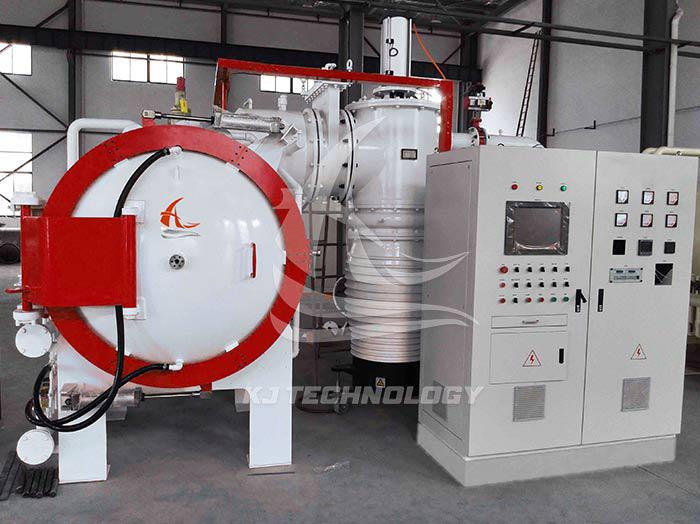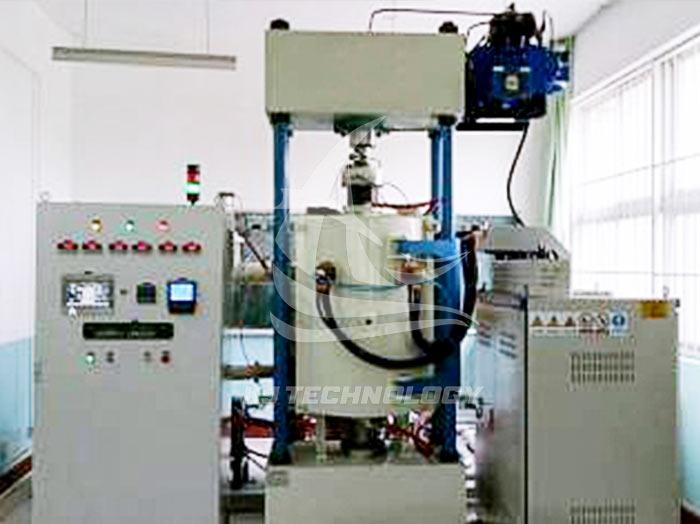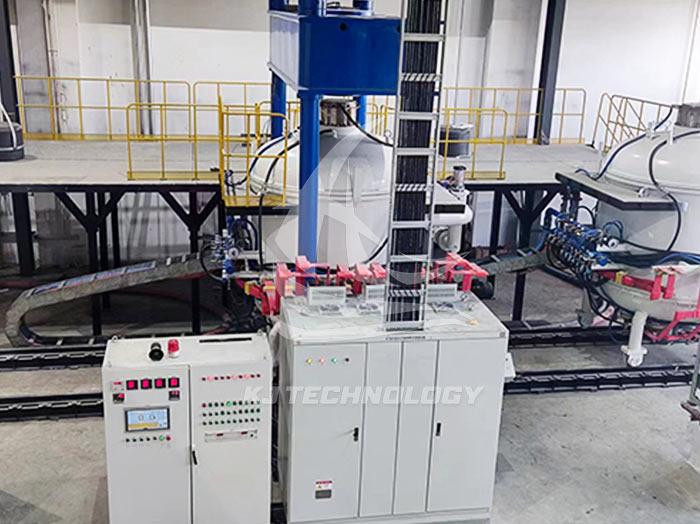Can high vacuum heat treatment brazing electric furnace brazing ceramics?
 10-15-2025 Author: KJ technology
10-15-2025 Author: KJ technology
The high vacuum heat treatment brazing electric furnace can brazing ceramics, and its core principle is to eliminate the oxide layer through a high vacuum environment, combined with active brazing materials (such as Ag Cu Ti) to achieve reliable connection between ceramics and metals or other ceramics. The following is a specific analysis:
1. Technical feasibility of ceramic brazing
The role of vacuum environment
High vacuum (with a maximum vacuum degree of 5.0 × 10 ⁻⁴ Pa or above) can completely eliminate oxygen and avoid oxidation or surface contamination of ceramics at high temperatures. This is crucial for brazing ceramics such as aluminum oxide (Al ₂ O ∝) and silicon nitride (Si ∝ N ₄), as the oxide layer significantly reduces the wetting properties of the brazing material.
Application of Active Solder Materials
The brazing of ceramics and metals requires the use of active brazing materials (such as Ag Cu Ti, Ni-Cr-B), where active elements such as titanium (Ti) or boron (B) can react chemically with the ceramic surface to form a chemical bonding layer, thereby achieving reliable connection. For example, in the brazing of Al ₂ O ∝ ceramics and Kovar alloy, Ag Cu Ti brazing material can increase the joint strength.
2. Typical application scenarios
Electronic packaging field
The brazing of ceramic substrates (such as Al ₂ O ∝, AlN) and metal frames is widely used in power modules, LED packaging, and other applications. High vacuum brazing can avoid insulation performance degradation caused by residual flux and improve product reliability. For example, a certain IGBT module connects a ceramic substrate to a copper substrate through vacuum brazing, reducing thermal resistance and extending lifespan.
Aerospace field
The brazing of ceramic engine components (such as Si ∝ N ₄ turbine rotors) to metal shafts requires extreme conditions such as high temperature and high-speed rotation. Vacuum brazing can form defect free joints, ensuring stable operation of components at 1200 ℃.
Medical implants
Zirconia (ZrO ₂) ceramic joints and titanium alloys are brazed for the manufacture of artificial hip joints. The vacuum environment avoids oxidation of biocompatible coatings, while the active solder provides long-term stability and meets FDA standards.
3. Technological advantages and case studies
Improvement of joint quality
Vacuum brazed ceramic joints have low porosity and high tensile strength.
Process flexibility
It can achieve the connection of ceramic ceramic and ceramic metal dissimilar materials. For example, vacuum brazing of SiC ceramics and stainless steel can control the thickness of the interface reaction layer and optimize the joint performance by adjusting the Ti content.
Cost benefit analysis
Although the cost of vacuum brazing equipment is relatively high (about 500000 to 2 million yuan per unit), it can eliminate subsequent cleaning and testing processes, reducing overall costs. A certain enterprise replaces traditional methods with vacuum brazing to save costs annually.
4. Technical Challenges and Solutions
Ceramic thermal stress control
The significant difference in thermal expansion coefficients between ceramics and metals can easily lead to joint cracking. The solution includes:
Use a flexible solder layer (such as Cu based solder) to cushion stress;
Adopting a step heating process, the heating rate is controlled to be ≤ 5 ℃/min.
Optimization of Wettability of Solder Materials
Some ceramics (such as SiC) have low surface energy and require plasma cleaning or chemical plating pretreatment to improve wettability. For example, after Ar+plasma treatment, the solder spreading area of SiC ceramics increases.








